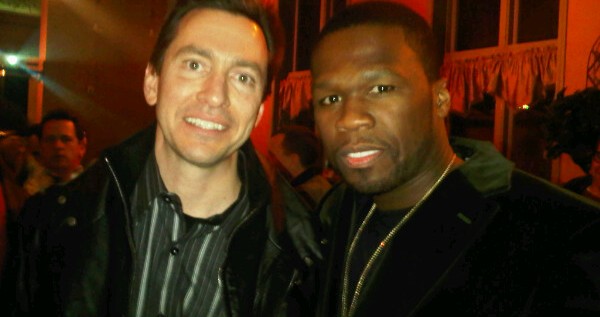December 25th – Happy Saturnalia

“Let there be light.” Light is the metaphor, opposed to darkness, of enlightenment, knowledge, virtue, and understanding. This primitive division of light and dark forces, of course, dominates nearly all cultures throughout most of recorded history.
The seven days of Saturnalia was a time to eat, drink, and be merry, beginning December 17, during the darkest days of the Winter Solstice. It was license within careful boundaries; it reversed the social order without subverting it. It was also an opportunity for men to be completely free with their fellowmen, sometimes evolving into homosexual and sometimes also pedophilia relations. The toga was not worn, but rather the synthesis, i.e. colorful, informal “dinner clothes”; and the pileus (freedman’s hat) was worn by everyone. Slaves were exempt from punishment, and treated their masters with disrespect. A Saturnalicius princeps was elected master of ceremonies for the proceedings.
Christmas and Epiphany
After Christianity became the official religion of the Roman Empire, the Roman Saturnalia of the Winter Solstice gradually converted to the Birth of the Sun of Righteousness around 336 in Rome. To separate the pagan from the religious, the Church assigned the 25th, rather than the the 17th through the 24rd, of December, as the natus Christus in Betleem Judeae. In the East, the Feast of the Epiphany (Jan. 6) unified the Nativity, the Magi, and the Baptism as a single event, with Light its revelatory singular theme.
The Christian Calendar has three cycles: The Liturgical Year and the Liturgical Day (the third is the Liturgical Calendar of Feasts). Two dates determine the the Liturgical Seasons: December 25, the Feast of the Nativity, and Easter, Feast of the Resurrection, which occurs on the first Sunday after the full moon of the Spring equinox. These two major feasts of Christianity are marked by heavy use of candles and lamplighting, as Light is the operative metaphor.
But not merely the year, also the Liturgical Day. The Church begins each day with Mary’s Magnificat “give light to those who sit in darkness” as its Matins canticle, welcomes dusk with “O gladsome Light” as its Vesper canticle, and closes the day with Simeon’s Nunc dimittis with “my eyes have seen the light,” as its Compline canticle — Light that penetrates darkness, anchors our aspirations to knowledge, goodness, and understanding, guiding our paths in the way of peace.
“So let your light shine before others,” quips Jesus, to flocks who seem to prefer darkness.
The Twelve Days of Christmas, which extends from December 25 (Nativity) to January 6 (Epiphany) is predominantly an English tradition, borrowed from its roots in Roman antiquity. Like the seven-day festival of Roman Saturnalia and the eight-day festival of Hanukkah, the Twelve Days of Christmas is not limited to a single day. The Feast of Circumcision, which followed the Nativity seven days later on January 1st, has long been suppressed in the Christian Calendar, replaced by the Feast of the Theotokos (Mother of God) or the Feast of the Holy Name, since the barbaric practice of circumcision is not endorsed by Christianity.
Hanukkah
The Jewish Hanukkah is a minor observance of a “non-biblical”* event, which lights up to nine branches of a menorah in a festivals of lights. The menorah differs from the ancient sanctuary and the tabernacle candelabrum with its seven-branched candelabrum which is lighted to shine as the Tree of Life – imagery reiterated from the Garden of Eden throught John of Patmos’ revelatory dream and in our present day Darwin’s Tree of Phyla (Life).
Hanukkah commemorates events recorded in the “Deuterocanonical” Book of Maccabees, which was rabbinically deemed “scripture,” until Christians found the Septuagint’s prophesy as validating Jesus as the Messiah, which thereupon caused rabbinical revocation.
*Thus, the Deuterocanonicals (a.k.a., Septuagint) are “appended” to Jerome’s Latin Vulgate, but are still deemed “inspired” by the Church. These Jewish stories are written during the Hellenistic diaspora, and thus written in Greek rather than Hebrew. Some of these works, such as Wisdom, Sirach, Tobit, Baruch, are among the most beautiful wisdom literature ever written, obviously influenced by “pagan” Hellenists.
This Festival of Dedication or Lights celebrates a small band of Jews overthrowing the mightier Hellenist Syrians in recapturing the desecrated Temple of Solomon, circa 165 BCE. To honor Yahweh for their victory, the Jews destroyed the Hellenized gods that populated the Hellenized Temple, purified it, and restored its historical functions (whether it included animal sacrifice is unclear). It also marks the time when Jews returned to their earlier tribal practices of strict observance set forth in the Torah: male circumcision, dietary laws, and ritual purification.
The Christmas Tree
How wonderful it is that the light of the Tree of Life (O Tennenbaum) is represented by the nine-branched menorah and the Christmas Tree, the latter a 19th century German tradition of populating lights throughout its many branches, that has become the Icon of Life itself. Again and again — from the primitive myths of the Tree in Garden of Eden through John of Patmos’ Revelation to the modern biological facts of Darwin’s Tree of Life (Phyla), the symbolic use of trees and lights clearly speaks across cultures and across time. Even secularists and atheists appreciate the natural beautify of pine trees decorated and lighted as symbolizing the birth of life itself, evolving over millennia into myriad of species, and crowned with humans at the top.
Contemporary Relevance
The significance of Saturnalia, Christmas, and Hanukkah today, in an Age of Enlightenment, is that light of faith foreshadows the light of knowledge, where superstition, primitive tribal customs, and myth anticipates an Enlightened Tree of Life as the guiding principle of humanity itself, the crowning apogee of evolution. Sadly, some people prefer to dwell in darkness, in the Age of Goths, the shadow of death, primitive superstitions, and tribal metaphysics. We call them ideologues and warriors, people of the book, rather than people of the light.
To the Light bearers, Bathe in the Light.

*Sarcasm Inclusive*



